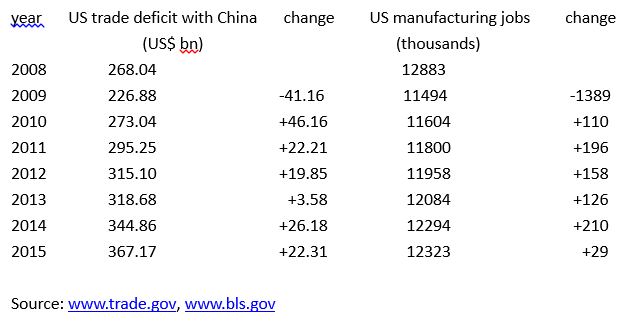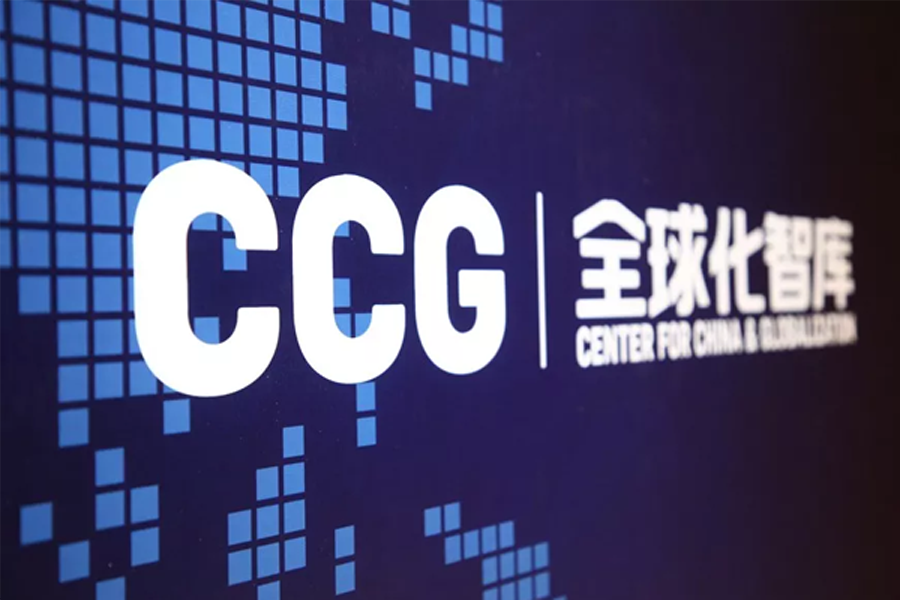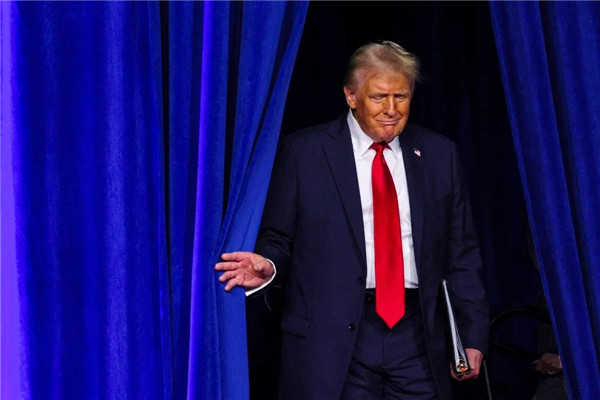He Weiwen: China and the US Should Collaborate for Global Trade
2016年10月9日The G20 Hangzhou Summit adopted the landmark Global Trade Growth Strategy and its action plan, making free trade and investment a strong engine and, together with innovation and structural reforms, to bring the enervated global economy back to a path of strong, sustainable and balanced growth.
It is most encouraging that it was endorsed by all G20 member countries including both China and the US, which means that the world two largest economies and trading powers will work together in this direction. The fact sheet released by President Xi Jinping and President Barack Obama stated this explicitly.
The G20 has so far relied mostly on fiscal and monetary policy tools to support the economic growth. With G20 moving from a crisis-responding mechanism to a long-term governance platform, the fiscal and monetary policies are increasingly insufficient, with technology, Industry, trade and investment to play greater roles in the future.
In order to realize the global trade strategy, it is most urgent to boost world goods trade, which has been growing even more slowly (2.8%) than global GDP (3.1%) for the past 3 years, with no pick-up on the horizon. Before the financial crisis, trade growth was normally twice as fast as GDP. As the world largest two economies and trading powers, China and the US have crucial responsibilities and capacities.
Uphold Multilateral Trade System and Globalization
In order to invigorate global trade, it is imperative to finish the ratification of the Bali Agreement on Trade Facilitation (TFA). If fully realized, the TFA can reduce the global trade cost by 14.5%, generating approximately $1 trillion, or 1.3% of world GDP. So far, 89 WTO members, including China and the US, have ratified the agreement, but another 21 members must do so before the agreement can take effect. Both China and the US should work hard to promote the ratification until it meets the threshold.
China and the US should also work closely in EGA negotiation under WTO. Both countries made good contributions in the successful conclusion of ITA expansion at WTO MC10, Nairobi, in December, 2015, which covers US$ 1.3 trillion global trade. If EGA is clinched, the global trade on environmental goods, and thus the green development envisaged at the G20 Hangzhou Summit, will definitely get a strong boost.
Attacks on Free Trade Deals and China Not Constructive
During the presidential campaign this year, both GOP candidate Donald Trump and Democrat Hillary Clinton criticized trade deals repeatedly for taking away American jobs. Both of them have been against TPP. Donald Trump pushed to renegotiate NAFTA, and asserted that China had benefited tremendously from WTO accession at the expense of the US, declaring that China has been “stealing American jobs”.
However, the US is neither a WTO loser, nor a NAFTA loser. According to the official data released by USDOC, total US goods exports to the world increased from $693.10 billion in 2002 to $1.5 trillion in 2015, 116.8% up over the 13 years. Its goods imports grew from $1,161.4 billion to $ 2,248.2 billion during this period, up 93.6%. Its exports grew faster than imports.
During the same period, its goods exports to Canada increased by 74.4%, while imports increased by 41.6%. Its goods exports to Mexico increased by 141.9%, while imports increased by 120.1%. The US export growth prevailed over import growth both with Canada and Mexico, and is certainly not a loser.
This time span exactly parallels China’s accession to WTO and last year. US goods exports to China grew by 424.5%, while its imports from China grew by 286.0%. Again, the US export growth prevailed. During this period, the US exports to China grew 2.42 times as fast as its exports to the world, while its imports from China grew 2.0 times as fast as from the world. Apparently, China’s accession to WTO has benefited both the US and China.
The assertion of China taking away American Jobs due to trade imbalance is also questionable.
If we review the trajectory of US goods deficits with China and manufacturing employment over the recent years, no fundamental linkage between trade deficits and job losses could be ascertained.

This trajectory shows just the opposite. 2009 was the only year that saw both drastic declines in the US trade deficit with China and in manufacturing employment. In all other years during this period, the US trade deficit with China increased each year, accompanied with manufacturing employment increases, with no exception. Apparently, the job changes have a direct linkage with the economic cycles.
The lack of linkage between trade deals and employment has also been proved by the US global trade deficit changes. During 2013-2015, the US global goods trade deficit expanded from $ 689.47 bn in 2013, to $ 735.19 bn in 2014, and $ 745.66 bn in 2015. During the period, there was no decline of manufacturing employment.
China and the US should both fight protectionism and support trade growth
An effective fight against protectionism is essential for realizing global trade growth goals. This year’s joint monitoring by WTO, OECD and UNCTAD on June 18 shows that over the 12 months to mid-May, G20 member countries adopted 228 trade restrictive measures, although G20 leaders have repeatedly pledged not to adopt any new such measures. Global Trade Alert, a UK report, said in July that world trade had stopped growing for 15 months since January 2015, the first time since 1989. A key reason was mounting trade protectionism. Among G20 countries, the US is by far the largest source of trade restrictive measures, having adopted 636 such measures since 2008, and over 90 measures in 2015 alone, or a new measure every four days. Those measures, while hurting international trade, also raise the cost of downstream manufacturing and consumption at home, and thus will hurt the US own economy in the end. It is highly anticipated that the Obama Administration will make a serious review of its trade restrictive measures over recent years and slash them drastically in compliance with WTO rules.
China, on its part, should also take decisive measures to further open up, and prepare a short negative list as soon as possible, thus offering more market access across the board and a leveled field for competition among SOEs, private and foreign businesses.
China and the US made considerable progress in bilateral investment treaty negotiations before the G20 Hangzhou Summit, and both forwarded ratification of the Paris Accord to the UN during the Summit, contributing 38% of the needed ratification of the accord out of the total 55% threshold. Those encouraging developments show that the sound collaboration between the two nations could serve as a strong engine in revitalizing global trade, and thus help bring the global economy back to a path of strong, sustainable and balanced growth.

Vice President and Senior Fellow at the Center for China and Globalization(CCG)
He Weiwen is a senior fellow at the Center for China and Globalization(CCG). He also serves as co-director of the China-U.S./EU Study Center at the China Association of International Trade. Previously, he served as the former economic and commercial counselor of Chinese Consulates General in San Francisco and New York.
From China-US Focus, Sep 13, 2016
Addendum
2012 Public Perceptions & Opinion Survey
The re-establishment of US-China relations in 1971 marked a strategic step that ended China’s isolation and transformed the global balance of power. Since that historic milestone, the United States as an established superpower and China as an emerging global power stand at the crossroads of cooperation and competition. Washington and Beijing understand the high stakes and hard choices involved in finding common ground amid global market uncertainty, security risks and domestic pressures.
In this pivotal year of political leadership transition unfolding in the United States and China, the Committee of 100’s Opinion Survey 2012 provides timely insight into American and Chinese attitudes toward each other on high impact issues. This year’s survey takes a comparative look at US and Chinese public and elite perceptions based on C-100’s mirror surveys conducted by American and Chinese polling firms in 2007 and 2012. In examining and integrating both years’ data and findings, C-100 has identified four overarching themes, presented in this executive summary, that characterize American and Chinese perceptions.
These core themes underpin the report’s six sections: Overall Impressions, Mutual Interests and Concerns, US-China Policy, Trade and Investment, Media Sources, and Domestic Views.
Overall Impressions
Shared global leadership: Converging consensus between American and Chinese respondents confirm China’s emergence as a global superpower and expanding influence in the global economy. The Chinese public has growing confidence about China’s status, but American public and elites have strong concerns and suspicions toward China’s future economic and military roles. As an established global superpower, the United States questions its current direction. Chinese elites anticipate US global leadership will continue over the next 20 years, but the Chinese public believes US global influence has decreased over the past 10 years.
Favorable views, reserved trust: The United States and China are almost evenly divided on the level of trust towards each other; they hold differing views and values on complex issues ranging from the pursuit of personal goals to the national direction. Compared to 2007, an increasing proportion of the American public accepts China as a rising power and wants a collaborative relationship, but a growing percentage of the Chinese public believes the US is trying to prevent China from becoming a great power. The two peoples are skeptical about their own governments in handling the bilateral relationship, as well as their own national media in the truthfulness of reporting about each other. Despite these differences, the overall view toward each other remains favorable.
Domestic Concerns, divided views: Each nation is facing complex domestic concerns and divided views. Jobs and the economy are the top US concerns, followed by the budget deficit, campaign finance, political gridlock, among others. The Chinese public’s top domestic concern is corruption; Chinese business leaders cite HIV and communicable diseases; Chinese opinion leaders identify morality issues and Taiwan.
Hopes and fears on economic and military issues: The United States and China share hopes and fears on important bilateral issues, especially economic and military. An overwhelming majority of American and Chinese public and elites believe trade is mutually beneficial, but concerns about trade deficit, intellectual property protection, job losses, product safety, and corruption also make trade the leading source of bilateral conflict. With China being the largest holder of US debt, the Chinese public does not believe US Treasury bonds are safe investments. Although a large majority of American elites expect Chinese investment in the US will create jobs and improve US-China ties, the American public is concerned about potential loss of US technological advantage or even control of its economy. American respondents believe US military presence is expected to help maintain security in the Asia Pacific, but the Chinese view it as a major concern for future conflicts. American respondents in 2012 believe China-Taiwan relations are a strategic issue in US-China relations, while the Chinese pubic and elites express more confidence that the issue is evolving towards peaceful resolution. The well-being of the United States and China is now deeply intertwined. Each is recognized as the other’s most important partner. Both countries need each other more than ever to resolve global challenges.
Consensus on a rising china: A large majority of American and Chinese public and elites agree China will have leading influence in the Asia Pacific region 20 years from now. China will have the most influence over the global economy in the next 20 years by a smaller-margin consensus. The US will remain the world’s leading superpower over the next 20 years according to US and Chinese elites.
From China-US Focus, July 26, 2012






